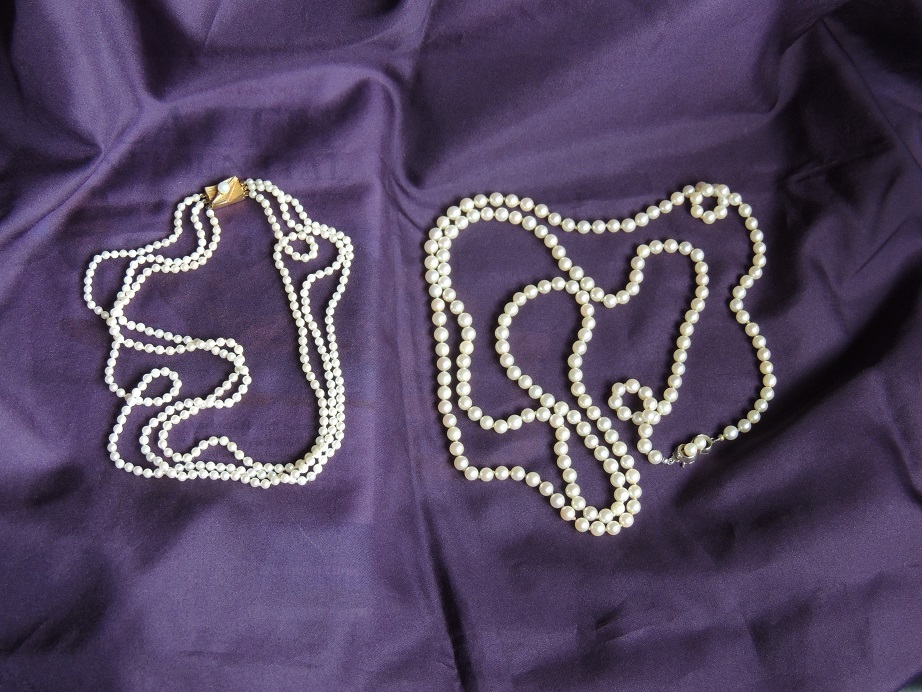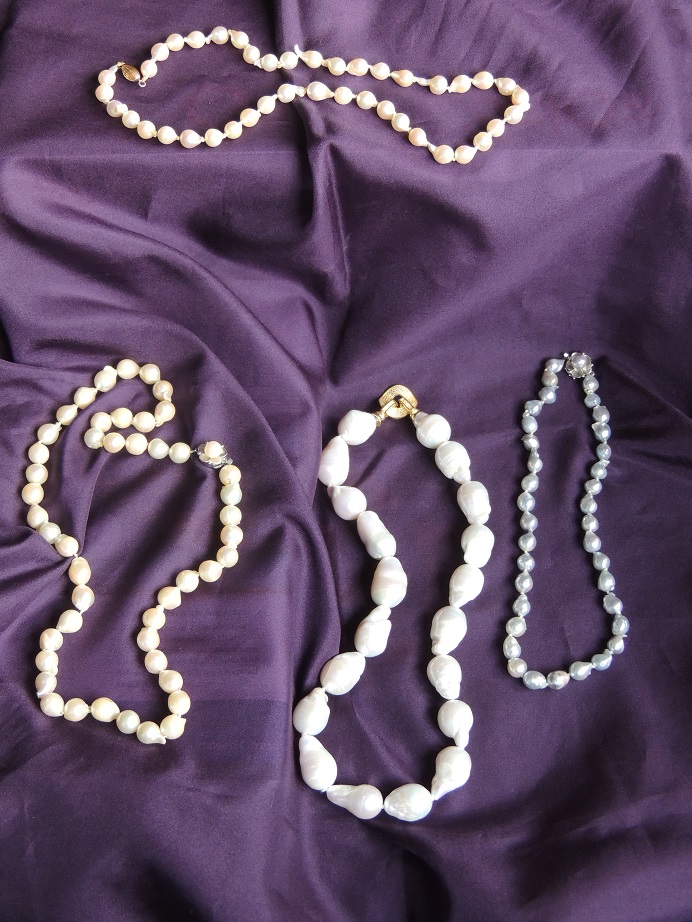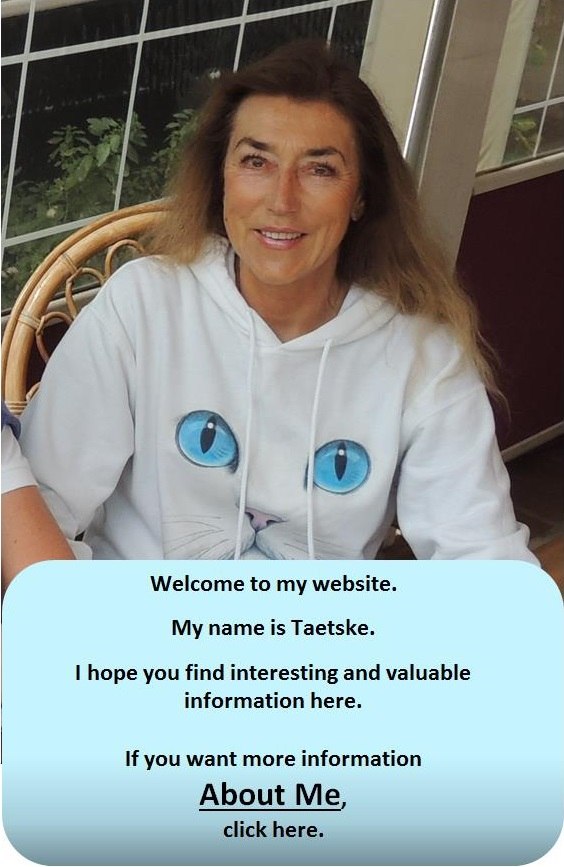The Many Pearl Varieties
Some Pearl History
The old Persians thought pearls were created magically by the moonlight shining into the open oyster. The birthplace of the fascination of humankind for the pearl is the Persian Gulf. Even today, it is still the primary source of natural pearls traded in the Middle East.
Over 2000 years ago, pearls were the most precious item you could buy with money.
Julius Caesar was a lover of pearls and once paid 60,000 gold pieces for one pearl. In the first century before Christ, Caesar passed a law stating that pearls were not for the lower classes. Even Caesar’s non-successful conquest of the Britons had, as one of its goals, access to the valuable river pearls.
Queen Elizabeth, I was so infatuated with pearls that the people called her the Pearl Queen.
A major turn came when, in 1908, the Japanese noodle producer Kokichi Mikimoto started the first commercial pearl farm. Less successful farmers had been operating in China since the fifteenth century. Mikimoto, aptly known as the pearl-king, had cracked the proverbial oyster by breeding perfectly round pearls and offered them to an enthusiastic world.
Since the 1960s, pearl farmers have been producing pearls to the market standard – and believe me, this is a good thing! What was historically considered an aristocratic luxury for the high society now became an affordable extravagance.
One should not forget that greed nearly killed off the oyster fields in Central American and the Scottish Oyster was nearly driven to extinction. In 1998, the United Kingdom declared it was illegal to fish for pearls.
Such a lovely book
It holds an enormous amount of information. You will read about the pearl fisheries in Asia, Africa, Europe, and the Americas. This book has over 180 illustrations and could well be the largest single collection of data on the subject of pearls. A book that will enhance your library.
Creating pearls takes time
To have a pearl farm is to have a perilous business. Creating a pearl takes between 8 months to 6 years. There are factors like illness, water temperature fluctuations, storms, and pollution which can ruin a farmer overnight.
In August 2007, two tropical storms in southern China killed millions of pearl oysters. About half of all cultivated pearls are good enough for the market and less than 5% of those are perfectly round pearls.
Four different types of pearls
Akoya pearls
These were the saltwater pearl oysters that Mikimoto started with. The Akoya pearl is now being farmed in China, Tahiti, and Vietnam because of the pollution of their original habitat. Normally the Akoya pearl takes between 8 months to 2 years to develop.

Some of my pearls
Sometimes up to 5 nuclei can be introduced but normally only two are inserted. Akoya pearls are seldom larger than 9 mm. On average, they are between 2 to 6 mm. Approximately one out of five seeded oysters produce a pearl but only a small part of that is of gem quality.
Sweet Water Pearls

Some of my pearls
In some of the Venus oysters, it might produce up to fifty pearls, which makes it precious. They produce a large variety of colors, have a very shiny surface and most of the time have a baroque form. They can also seed Chinese Sweetwater oysters with little beads which then produce a pearl up to 14 mm in diameter.
South Sea Pearls
There are being farmed in Australia, Indonesia, and the Philippines. This oyster is known for its white, silver, and golden pearls. They take between 2 to 6 years to grow. They can only seed the oyster with one nucleus. Normally they are around 16 mm but can grow to 20 mm.
Tahiti Pearls
Named after the French Polynesian Island, these are the most sought-after pearls. Europeans only discovered them in 1845. The typical color is blue-green. The most frequently found color is the dark green one called Fly-Wing.
Another variation is pink in combination with a black background color so the eggplant color is created. The rarest and most expensive is the peacock color, which is a green–pink combination. These pearls are normally between 8 to 16 mm.
A completely natural pearl
On rare occasions, we find a truly natural pearl. The biggest pearl ever found is called the Pearl of Lao Tzu. Here you can read the story. One rarely finds natural pearls and when they are very expensive.
Most of the pearls available today are “cultured”. A small rounded piece of “Mother of Pearl” called nacre, along with a part of the original oyster’s mantle, is placed inside the oyster. The oyster is then put back into the protective basket. Cultured pearls produced this way provide consistent quality, size, and color. They can come from freshwater oysters or saltwater oysters. Both can produce wonderful colors and sizes.
Conclusion
From my grandmother and my mother, I have different pearl sets. I sometimes wear them as pearls can lose their shine if kept too long inside a box. Most women will love pearls as they give a chic and mysterious touch to any outfit. Giving pearls as a gift you can never go wrong.
It is important to keep your pearl separated from other jewelry pieces less they get damaged. The best is to keep them in a soft cloth or small bag. Keeping them for too long a period without wearing them is not good.
I have made a special page for you. It holds a collection of things you might find interesting. Before you leave, pay a visit to Recommendations.
Photo Source: Private Photos









Comments
Michelle
Very interesting article about pearls. I certainly learned a thing or two.Thanks so much for this short educational experience, Taetske. I look forward to more education about the simple yet beautiful things that Mother Earth gives to us freely.
Taetske
Good evening Michelle,
Thank you for visiting my website. It is amazing the different and beautiful things Mother Earth has as gifts for us. I personally love pearls and have them in all colors and shapes. For Christmas, I got a lovely Collier of big Barroc pearls and just now I got a specially made for me ring to match it.
Pearls give that extra touch to what ever you wear. The company I found in India also has some amazing pieces and their prices are extremely competitive.
Regards, Taetske
Charles Holmes
This is a very interesting article about pearls. My wife and I sell a lot of vintage jewelry that we find at yard sales, flea markets and thrift stores. We come across many pearl necklaces. The only way I can tell if one is good or not is based off the clasp. If the clasp is sterling or gold, I normally know the pearls are pretty good.
Do you have any tips on how to identify a real pearl from a fake one or a fresh water pearl from a salt water pearl? That information would be great to know. I enjoyed your write up and look forward to hearing back from you.
Taetske
Good evening Charles,
Thank you for visiting my website and leaving a comment. I hope you downloaded your free PDF?
I can agree with you, good pearls will have a silver or gold clasp sometimes with a small pearl or other stones.
I am sending you a link and a video, I hope your questions are there with answered.
This video gives you some tips.
Here is a link with information on the difference between saltwater and sweet water pearls
https://www.jewelrynotes.com/freshwater-vs-saltwater-pearls-what-is-the-difference/
Regards, Taetske
Kari
Taetske
Hello again. I love all of your information, truely fascinating. I especialy like those natural pearls. Of course they have to be the most expensive ones they can find. Those Jet Black Oval Pearls are next on my list of have to haves. I did not know that they can lose their shine if kept in a box for to long. Thank you again and I am going to have to wear my only set so they can breathe. Where can I find purple colored pearls?
Taetske
Good evening Kari,
Nice to see you again. Thank you for your comment.
I went to have a look at the pearl company in India.
Under Pink and Black pearls I found a lavender colored one for $72.05
Under the Exotic Pearl colors, I found 3 possible candidates.
Purple color necklace for ·89.90
5 Lines lavender color for $ 145.00
Light Purple for $42.05
I think their prices are very compatible and they have a lot of variety, earrings, necklaces, bracelets, and even watches, really nice.
Regards, Taetske
Nina
I also have some family pearls that are from my great-grandmother. I basically knew how they came to be, but it was only now that I thought about the origin through your writing. It would be interesting to know to which group of pearls belong to those I have.
You got me excited to check if there is an expert on pearls near me who could look at them and say something more from a professional point of view.
A very interesting article in which I learned a lot about pearls, thank you!
I wish you all the best
Nina
Taetske
Good afternoon Nina,
It is nice to hear you found my post on pearls interesting.
How lovely you inherited pearls from your great-grandmother. A great idea to have them looked at by a professional. I am sure a good jewelry shop will have information on where to find such a person. Otherwise, auction places might be worth a try.
Here in the south of Spain, we have Bonhams. They do appraisals of antiques, also jewelry.
Thank you for your visit and for your comment. Remember, you can download a free PDF of your choice? Tulip widget.
Regards, Taetske